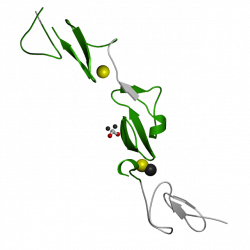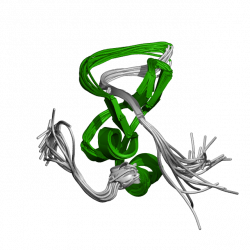This web page was produced as an assignment for Genetics 677, an Undergraduate course at UW-Madison
Protein Domains
Protein-binding domains allow us to predict how proteins may act in certain environments and how they are involved and interact with other proteins. Multiple databases were searched for protein domains involved in FBN1 protein. Two databases that were used include Pfam and SMART, providing the same results. The protein contains two types of domains: 42 Calcium-binding EGF domains and 9 TB domains.
Calcium-Binding EGF Domain
This domain is commonly found in epidermal growth factor (EGF), which is found to be involved with membrane bound and extracellular proteins. If we look back to the gene ontology page, we can see that Fibrillin is involved in extracellular matrix component of the cell. Calcium and Calcium-binding has been proven important for many cellular functions but it will be interesting to see how calcium specifically affects Fibrillin.
TB Domain
This domain is also known as the 8 cysteine domain because it is rich in cysteine repeats. As it is found in Fibrillin, it is also found in TGF (transforming growth factor) binding protein. Further research in this protein-protein interaction could explain much about the connective tissue disorder.
References
Gabrielle Waclawik
[email protected]
May 13, 2010
www.gen677.weebly.com
[email protected]
May 13, 2010
www.gen677.weebly.com



